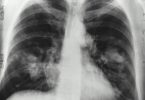Imagine this scenario—You’re employed at the same factory as your parents, grandparents, and even a few cousins. Despite the less-than-ideal pay, it’s a stable income, likely the best option within a 60-mile radius of your small town. Unfortunately, the factory lacks proper ventilation, leading to a distinct, acrid odor saturating the air by mid-day, emanating from the hot, active machinery. You frequently experience discomfort, ranging from occasional lightheadedness to persistent itching in your throat and eyes. On some days, these symptoms worsen, resulting in difficulty breathing.
Many people might attribute these health issues to allergies rather than recognizing the potential for chemical exposure in the workplace. Even if they do acknowledge chemical exposure, a large number of us choose not to voice our concerns or seek alternative employment, out of fear of retaliation or not being able to find another job. Above all, many of us are trained to just be thankful we have a job, and don’t screw it up; and remain more dedicated to the employer than they are to us.
But, did you know that each year in the United States, thousands of individuals are exposed to chemicals in the workplace with approximately 50,000 deaths attributed to such exposure? For example, even as recent as November 2023, more than 30 Los Angeles Live employees were evaluated when feeling sick after a 55-gallon drum of unknown chemicals spilled. What would you do in this situation?
The reality is that exposure to chemicals in the workplace is far more prevalent than commonly believed. Industries such as manufacturing, construction, agriculture, healthcare, and auto repair are notorious for this occupational hazard. Consequently, a higher percentage of individuals in our community working in these sectors face significant risks of chemical exposure, leading to severe health implications.
Let’s explore why Black individuals are disproportionately affected by chemical exposure in the workplace, delve into various types of chemical exposure, and propose potential solutions to address this critical issue.
More Prevalence Within Black Community
Historically, people within the Black community have been disproportionately represented in industries where exposure to hazardous chemicals is prevalent. This imbalance is a result of systemic issues. The consequences of workplace chemical exposures can manifest in a variety of health problems, ranging from respiratory issues and skin disorders to chronic diseases. However, it’s time to ask ourselves why is there more prevalence within our community?
- Occupational segregation. Various studies reveal that Black workers face a higher likelihood of exposure to cancer-causing agents, neurotoxicants, and other hazardous substances compared to their white counterparts. Occupational segregation is where Black workers are concentrated in lower-paying and more manual labor-intensive roles
- Socioeconomics. Limited access to education, training, and information about workplace hazards can exacerbate the vulnerability of Black workers. As such, financial constraints may restrict access to adequate healthcare, intensifying the health impact of chemical exposures
- Discrimination. Discrimination within the workplace can further compound the health risks associated with chemical exposures. According to the International Journal of Environmental Research and Public Health (2019), discrimination is a significant factor, potentially intensifying the health impacts of chemical exposures on Black workers. Unequal treatment may force individuals from voicing concerns about hazardous conditions or speaking their mind about protective measures
Workplace chemical exposure occurs in various ways:
- Inhalation. Breathing in airborne chemicals, common in industries like manufacturing and agriculture
- Skin Contact. Direct contact with chemicals can cause irritation or allergic reactions
- Ingestion. Accidental swallowing of chemicals in poorly managed workplaces
- Injection. Accidental exposure through punctures or needle sticks
- Eye Exposure. Contact causing irritation or burns, common in labs and manufacturing
If accidentally exposed to chemicals, even briefly, take it seriously. Know office protocols beforehand. Educate yourself and coworkers proactively to prevent incidents.
Preparing for possible chemical exposure
- Request training on chemical handling, PPE use, and hazard awareness
- Demand proper and accessible PPE (gloves, goggles, masks) when handling chemicals
- Ask if there are safer substitutes for hazardous chemicals you may be using
- Ensure you have proper ventilation to reduce exposure
- Ensure correct labeling, storage, and handling of chemicals
- Regularly maintain equipment to prevent leaks or spills
- Request training for emergency protocols and signage in workplace
- If you feel as if you’ve been exposed, report concerns as soon as possible
- Understand which chemicals you work with and recognize the symptoms of each
- Ensure your compliance with safety regulations for chemical handling
Addressing the health impacts of chemical exposures on Black Americans requires a comprehensive approach. Workplace policies must prioritize the reduction of hazardous exposures with enforcement to ensure protection for all workers. Advocacy for stricter workplace safety regulations and their consistent enforcement is crucial for creating environments where Black workers can thrive without compromising our health.
Education and training programs are pivotal in empowering Black workers with the knowledge and tools to navigate workplace hazards safely. Initiatives promoting diversity and inclusion in various industries can help dismantle occupational segregation, providing Black workers with opportunities for career advancement in less hazardous environments.
Finally, we all understand that our 9 to 5 jobs are the keys to food, clothing, and shelter. So we tend to feel as if we are walking on thin ice and can’t address critical issues at work. But remember, our health is of utmost importance and once our health declines, the chances of us being able to support ourselves and our families lessen.
For more reading:
1. Smith, A. B., & Rorie, J. (2014). Occupational exposures among racial and ethnic groups in the United States. *American Journal of Public Health, 104*(Suppl 3), S455-S462. [DOI: 10.2105/AJPH.2013.301651]
2. Johnson, D. L., & Subramaniam, P. (2019). Racial and Ethnic Disparities in Environmental Endocrine Disrupting Chemical Exposure in the United States: An Update. *International Journal of Environmental Research and Public Health, 16*(23), 4758. [DOI: 10.3390/ijerph16234758]








